Q&A Series: 7 Hot-Button Questions (and Answers) Regarding the EPA's Hazardous Waste Generator Improvements Rule Revisions
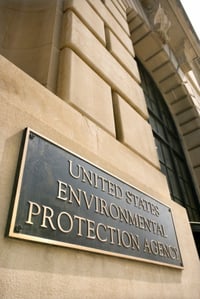 This past October, the EPA signed the final Hazardous Waste Generator Improvements Rule to provide greater flexibility to hazardous waste generators and clarification around certain components of the hazardous generator program in an effort to improve compliance and environmental protection. Some revisions appear to be more lenient than existing regulations, while others are more stringent. I recently delivered a webinar on this topic and provide answers to some of the most common questions received.
This past October, the EPA signed the final Hazardous Waste Generator Improvements Rule to provide greater flexibility to hazardous waste generators and clarification around certain components of the hazardous generator program in an effort to improve compliance and environmental protection. Some revisions appear to be more lenient than existing regulations, while others are more stringent. I recently delivered a webinar on this topic and provide answers to some of the most common questions received.
When are the states required to submit their base RCRA plan? Are they required to share this proposed plan with their state?
There is no indication of a deadline for states to submit their proposed modification to RCRA state programs to include all stricter changes to the generator improvement rule. However, all base programs must adopt all provisions that are more stringent by July 1, 2018 or by July 1, 2019 if State law changes are needed. Upon submittal of the modification to the EPA regions, all states must open a public comment period to allow review of the proposed plan.
What kind of documentation is required for hazardous waste determinations?
A lot of explanation has been given by the EPA in the Federal Register Notice of the final rule regarding the meaning of “accurate." It’s as follows:
“EPA focus on the generic process of making a hazardous waste determination rather than a waste specific approach.” (page 85800 Federal Register / Vol. 81, No. 228 / Monday, November 28, 2016 / Rules and Regulations).
“The Agency is finalizing the following changes to § 262.11: (1) Requiring that a solid and hazardous waste determination must be accurate, and expanding on why this determination is important; i.e., to ensure the proper management of the waste within the RCRA framework; (2) Requiring that a hazardous waste determination for each solid waste must be made at the point of waste generation, before any dilution, mixing, or other alteration of the waste occurs, and at any time in the course of its management that it has, or may have, changed its properties as a result of exposure to the environment or other factors such that its waste classification may have changed; (3) Incorporating regulatory language that elaborates on how to make a hazardous waste determination for listed and characteristic hazardous waste; (4) Referencing the applicable RCRA regulations for identifying possible exclusions or exemptions for the hazardous waste at in § 262.11(e). (5) Moving the independent recordkeeping and retention requirements for hazardous waste determinations currently found at § 262.40(c) into § 262.11(f), with clarifications on what records must be kept; and (6) Requiring SQGs and LQGs to identify the applicable RCRA waste codes for the hazardous waste they have generated, but clarifying that such identification must occur no later than immediately prior to shipping hazardous waste off site to a RCRA permitted treatment, storage and disposal facility in accordance with the requirements of § 262.32.” (page 85749 Federal Register / Vol. 81, No. 228 / Monday, November 28, 2016 / Rules and Regulations).
“The Agency is finalizing the proposed requirement for generators to make accurate hazardous waste determinations. However, we are also modifying the proposed regulatory text in response to comments to provide a rationale for this change by stating that the accurate determination is in order to ensure wastes are properly managed under RCRA. Accurate hazardous waste determinations are necessary to ensure the proper management of waste within the RCRA framework; in doing so, environmental protection will be enhanced and greater generator accountability fostered. EPA believes that waste determinations are of utmost importance and warrant this emphasis regarding accuracy. [..]The Agency’s intent is that all parts of the RCRA regulatory program be implemented in the manner required by the regulations. In adding the term ‘‘accurate’’ to the waste determination requirement of § 262.11, the Agency intends to emphasize the importance of this step in the waste management process. Inaccurate hazardous waste determinations will lead to violation of other RCRA regulatory requirements and mismanagement of the waste, which may result in damage to human health or the environment.” (pages 85749/750 Federal Register / Vol. 81, No. 228 / Monday, November 28, 2016 / Rules and Regulations).
Item number (5) of the generator determination rule states: “Moving the independent recordkeeping and retention requirements for hazardous waste determinations currently found at § 262.40(c) into § 262.11(f), with clarifications on what records must be kept” (page 85749 Federal Register / Vol. 81, No. 228 / Monday, November 28, 2016 / Rules and Regulations).
The regulation at 262.40 (c) reads as follows: “A generator must keep records of any test results, waste analyses, or other determinations made in accordance with §262.11 for at least three years from the date that the waste was last sent to on-site or off-site treatment, storage, or disposal.” (http://www.ecfr.gov/cgi-bin/text-idx?SID=d208d62894d5d40b701c5493a2502ee9&node=pt40.26.262&rgn=div5#se40.28.262_140 ) This text still applies in the new regulation when it comes to determination recordkeeping.
All generator categories must ensure they determine their waste properly. Therefore, this rule applies to VSQG, SQG and LQG’s.
Can you clarify the labeling requirements under the new rule? Do they contradict the OSHA HazCom Standard?
Albeit health and safety regulations, the OSHA Hazard Communication standards “[A]ddress comprehensively the issue of classifying the potential hazards of chemicals, and communicating information concerning hazards and appropriate protective measures to employees” (Federal Register / Vol. 77, No. 58 / Monday, March 26, 2012 / Rules and Regulations/ 29 CFR parts 1910, 1915, 1926 https://www.osha.gov/dsg/hazcom/HCSFinalRegTxt.html ). Hazards of chemicals must also be communicated when these chemicals are waste in order to protect the environment; which is the premise of the RCRA rules. This provides a legal intersectionality of both environmental rules and health and safety rules. Such intersectionality also exists between the DOT and RCRA regulations.
The new labeling rules have been 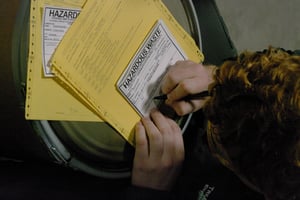 finalized as follows: "labeling of containers in SAAs require SQGs and LQGs to mark containers with the following: (1) The words ‘‘Hazardous Waste’’; and (2) an indication of the hazards of the contents of the container including, but not limited to, the applicable hazardous waste characteristic(s) (i.e., ignitable, corrosive, reactive, toxic); hazard communication consistent with the DOT requirements at 49 CFR part 172 subpart E (labeling) or subpart F (placarding); a hazard statement or pictogram consistent with the OSHA Hazard Communication Standard at 29 CFR 1910.1200; or a chemical hazard label consistent with the NFPA code 704).” (page 85758 Federal Register / Vol. 81, No. 228 / Monday, November 28, 2016 / Rules and Regulations).
finalized as follows: "labeling of containers in SAAs require SQGs and LQGs to mark containers with the following: (1) The words ‘‘Hazardous Waste’’; and (2) an indication of the hazards of the contents of the container including, but not limited to, the applicable hazardous waste characteristic(s) (i.e., ignitable, corrosive, reactive, toxic); hazard communication consistent with the DOT requirements at 49 CFR part 172 subpart E (labeling) or subpart F (placarding); a hazard statement or pictogram consistent with the OSHA Hazard Communication Standard at 29 CFR 1910.1200; or a chemical hazard label consistent with the NFPA code 704).” (page 85758 Federal Register / Vol. 81, No. 228 / Monday, November 28, 2016 / Rules and Regulations).
This allows for greater flexibility to generators when identifying their wastes. Whether generators use hazardous waste characteric(s), DOT labels, OSHA hazard communication labels (GHS pictograms) and/or NFPA diamonds, the indication of the hazard of the content is clearly identified, per the generator regulation. In addition, the EPA has offered an explanation on allowing OSHA communication standards to be used on containers as follows: “These proposed changes were designed to alert workers, emergency responders, and others to the potential hazards posed by the contents of a container. Identifying the hazard increases awareness to workers and others who might come into contact with the hazardous waste container and reduces potential risks to human health and the environment from container mismanagement.” (page 85757 Federal Register / Vol. 81, No. 228 / Monday, November 28, 2016 / Rules and Regulations).
Do containers in lab packs need waste codes on the individual containers if the outer lab pack container has all pertinent EPA waste codes?
Part of the labeling changes the EPA has finalized is the requirement to label all hazardous waste containers with the hazard waste codes of their content. The EPA clarifies this rule change in the following way: “The Agency is finalizing at § 262.11(g), the requirement proposed at § 262.11(f) that all applicable EPA hazardous waste numbers (EPA hazardous waste codes) be identified, but with two clarifications: (1) This requirement only applies to SQGs and LQGs; and (2) the codes do not need to be marked on the container until the hazardous waste is being prepared for shipment off site (i.e. pre-transport requirements). However, SQGs and LQGs may have waste management practices in place and choose to identify the RCRA waste codes sooner than prior to shipment.” (Page 85753 Federal Register / Vol. 81, No. 228 / Monday, November 28, 2016 / Rules and Regulations). This means lab pack shipments will have to contain the waste codes on the exterior of the shipping container, not on individual containers packed together.
Could you expand a bit on allowable conditions for not closing a container in an SAA when the generator isn't actively adding waste?
The EPA explains it as follows: “The regulatory language has been modified so that a container holding hazardous waste must be closed at all times during accumulation, except when adding, removing, or consolidating waste, or when temporary venting of a container is necessary (1) for the proper operation of equipment, or (2) to prevent dangerous situations, such as build-up of extreme pressure (emphasis added).” (page 85764 Federal Register / Vol. 81, No. 228 / Monday, November 28, 2016 / Rules and Regulations).
Furthermore, the EPA stresses that this rule is not a loophole to allow for containers to be vented, and it’s only applicable to SAA’s: “EPA stresses it does not intend to create a loophole to the closed container requirement or to allow intentional evaporation of hazardous waste. Rather, the intent of the flexibility is to address the limited cases in which ‘‘strict adherence to the ‘‘container closure’’ requirements could substantially increase a risk of a hazardous waste incident rather than decrease it.’’ As with the proposed rule, the flexibility for containers to remain open in specific situations applies only to containers in SAAs because that is where hazardous waste initially accumulates. At this time, we are not extending this flexibility to containers accumulating in CAAs.” (page 85764 Federal Register / Vol. 81, No. 228 / Monday, November 28, 2016 / Rules and Regulations).
Are there additional training requirements for SAA staff, i.e. laboratory personnel?
 In regards to employee training, the EPA has incorporated one change when employee trainings are done electronically or via the internet. The EPA explains this as follows: “4. Technical Changes on Personnel Training Applicable to Large Quantity Generators. – EPA has acknowledged that, since promulgation of personnel training regulations in the 1980s, use of computerized training has become a common practice for generators to teach their workers about the management of hazardous waste. Due to the fact that many generators already use this method for training workers, a modification that reflects use of online computer training would simply bring the hazardous waste personnel training regulations up to date with existing industry practices. Therefore, EPA proposed to also allow a generator to use online computer training, in addition to classroom instruction and on-the-job training, to complete the personnel training requirements. EPA requested comment on this proposed modification. […] EPA is modifying proposed § 262.17(a)(7)(i)(A) by inserting language that takes into account computer-based and/or electronic training options.” (page 85794 Federal Register / Vol. 81, No. 228 / Monday, November 28, 2016 / Rules and Regulations).
In regards to employee training, the EPA has incorporated one change when employee trainings are done electronically or via the internet. The EPA explains this as follows: “4. Technical Changes on Personnel Training Applicable to Large Quantity Generators. – EPA has acknowledged that, since promulgation of personnel training regulations in the 1980s, use of computerized training has become a common practice for generators to teach their workers about the management of hazardous waste. Due to the fact that many generators already use this method for training workers, a modification that reflects use of online computer training would simply bring the hazardous waste personnel training regulations up to date with existing industry practices. Therefore, EPA proposed to also allow a generator to use online computer training, in addition to classroom instruction and on-the-job training, to complete the personnel training requirements. EPA requested comment on this proposed modification. […] EPA is modifying proposed § 262.17(a)(7)(i)(A) by inserting language that takes into account computer-based and/or electronic training options.” (page 85794 Federal Register / Vol. 81, No. 228 / Monday, November 28, 2016 / Rules and Regulations).
Furthermore, the EPA had considered requiring SAA-level employees to be trained on RCRA rules and regulations, however, public comments deterred the EPA to affirm this position. Therefore, no regulations have been added regarding employee training. This is explained as followed: “Although current EPA guidance excludes staff working in SAAs from the training requirements, the Agency expressed a belief that such personnel have a similar need to know the risks associated with hazardous wastes as personnel working in central accumulation areas. Therefore, EPA also asked for comment on whether personnel involved in handling or managing hazardous wastes in SAAs should be required to undergo hazardous waste training. […] Taking into account the differing opinions of commenters, the existence of EPA guidance on this point and the desire to maintain flexibility, the Agency has decided not to revise § 262.17(a)(7) to identify areas of hazardous waste management for which personnel training and a written job description are required or to specifically require training for staff at SAAs. However, EPA would encourage all generators to take appropriate steps to ensure that all employees who work at areas where hazardous waste is accumulated, including at SAAs, or are otherwise involved in hazardous waste management receive sufficient training to ensure that they are familiar with proper handling and emergency procedures.” (page 85797 Federal Register / Vol. 81, No. 228 / Monday, November 28, 2016 / Rules and Regulations).
If you were historically a LQG and are now a SQG, would you need to notify 30 days in advance for closure?
Only LQG’s are subject to the closure notification rule. If a site was historically an LQG, but currently operates as an SQG, unless the EPA or state has been re-notified of the change in generator status, the site would probably still be considered an LQG. Additional questions regarding closure and change in generator status should be addressed to respective state programs.
Check out the full webinar recording by clicking the button below.
For a list of FAQ's regarding Implementing the Hazardous Waste Generator Improvements Final Rule, please visit https://www.epa.gov/hwgenerators/frequent-questions-about-implementing-hazardous-waste-generator-improvements-final-rule.


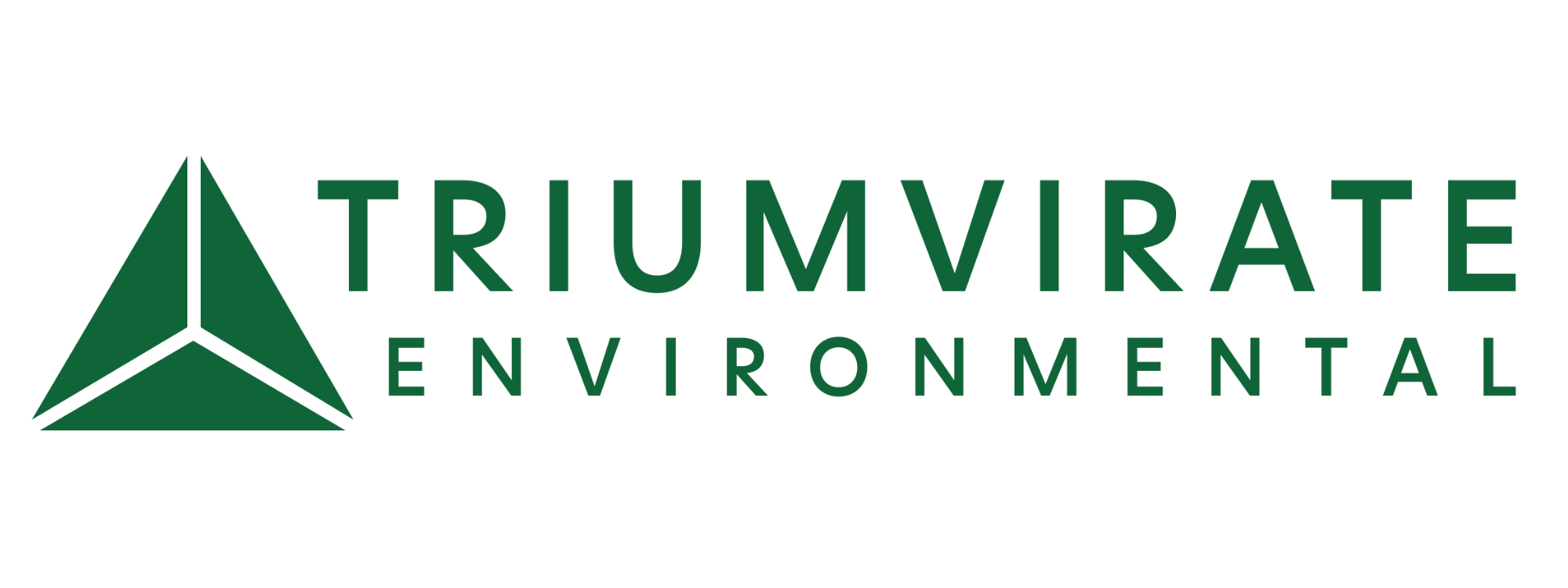


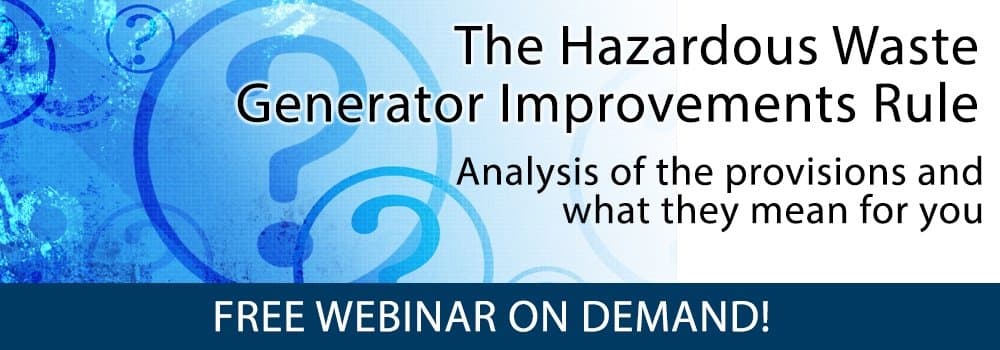
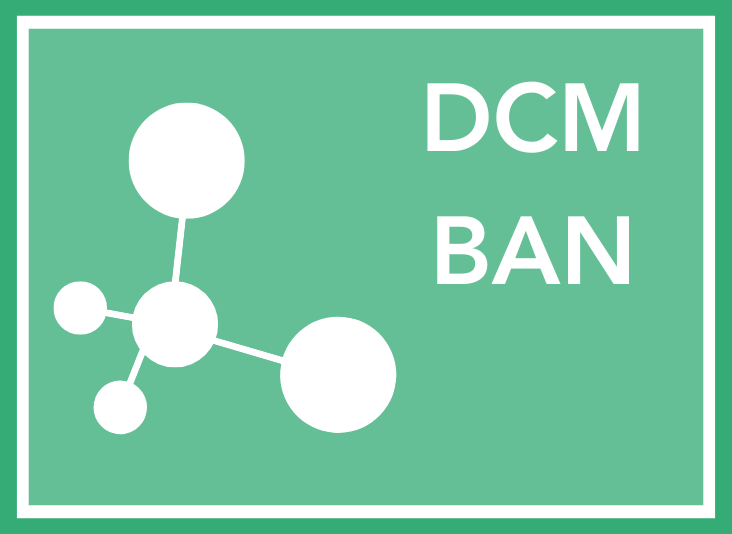


.png)